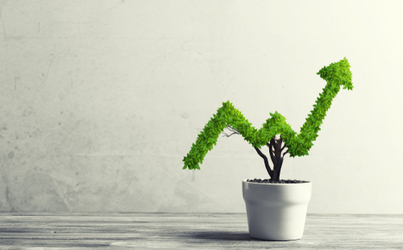The Rise of Green and Responsible Investment
01 Feb 2020
The impact of climate change on our societies has been growing at an alarming rate, resulting in a need to transition nations towards green and low-carbon economies. To address the current environmental challenges, researchers estimate a funding gap of around US$200 billion to US$1,000 billion annually . Much of the investment is needed to cover infrastructure needs. In 2015, it was estimated that an annual gap of US$1 trillion is needed to build regular infrastructure projects. Back then, only 7-13% of infrastructure projects were low-carbon and climate-change resilient (LCR) .
Since governments lack the resources to exclusively cover these needs, financial markets need to act and shift towards low-carbon and climate-friendly financing. One way to measure this shift has been the rise of green bonds. These bonds are defined by the OECD as an instrument which is used to finance green projects that deliver environmental benefits. These bonds have gained considerable prominence in recent years as one way to finance the transition to a low-carbon economy. They came to market in 2007 when the European Investment Bank issued its first green bond, a EUR 600 million equity index-linked security. This bond was used to fund renewable energy and efficiency energy projects. When the World Bank issued its first bond a year later, it was a huge boost towards the rise of green bonds. By 2017, issued green bonds valued more than US$155 billion.
Such bonds contribute to green investment in several ways. Firstly, they provide additional and long-term green financing. They also enhance the issuers’ reputation and offer potential cost advantages. Furthermore, they facilitate the “greening” of traditionally brown sectors as well as make new green financial products available to responsible and long-term investors.
Three key trends shape the future of green bonds. First, new types of issuers will enter the market. In addition to corporation, transportation agencies, utilities and airports which have already issued green bonds, sovereign green-bond markets have also emerged. Second, issuers are increasingly using green bonds as part of their regular financing mechanisms, many are issuing their second and third transactions which indicates an increase in the maturity of the market. Third, the success of green bonds is driving acceptance of the fixed-income market as the natural home for environmental, social and governance investing.
There will also be innovations in this space. One example is Majid Al Futtaim’s green bond which was designed and launched as the world’s first green sukuk on Nasdaq Dubai. Valued at $600 million and with a tenor of 10 years, the Green Sukuk is testament to Majid Al Futtaim's long term commitment to support the transition to a low carbon economy. The investment is being used to finance and refinance Majid Al Futtaim's existing and future green projects, including green buildings, renewable energy, sustainable water management, and energy efficiency.
Despite the potential and anticipated benefits, there are challenges that the green bonds market faces including lack of awareness on the importance of green bonds, lack of international and local guidelines, the costs of meeting green bond requirements, the lack of green bond ratings, indices and listings, and the lack lack of supply of labelled green bonds.
To address some of these barriers, leading governments are now working on developing a green bond friendly policy environment and regulatory frameworks. There is also the need for structured market building; identifying project pipelines, developing green guidelines and standards. This includes both demand-side; giving public institutions mandates for green bond investment, and supply-side measures; reducing costs of green bonds issuance and reporting.
Looking forward, by 2035, the green bond market is estimated to grow to US$4.7-5.6 trillion in outstanding bonds with annual issuance reaching a healthy US$620-720 billion. These estimates are based on two main factors, the first is the inclusion of energy, energy efficiency and low-emission vehicles, and the second is growth in the four largest bond markets (China, the European Union the United States and Japan). However, if we count for other factors such as including climate adaptation and scaling up the bond market to include other economies, then the future of green bonds will certainly be even more prosperous.
This article was first published in issuu.com
X





